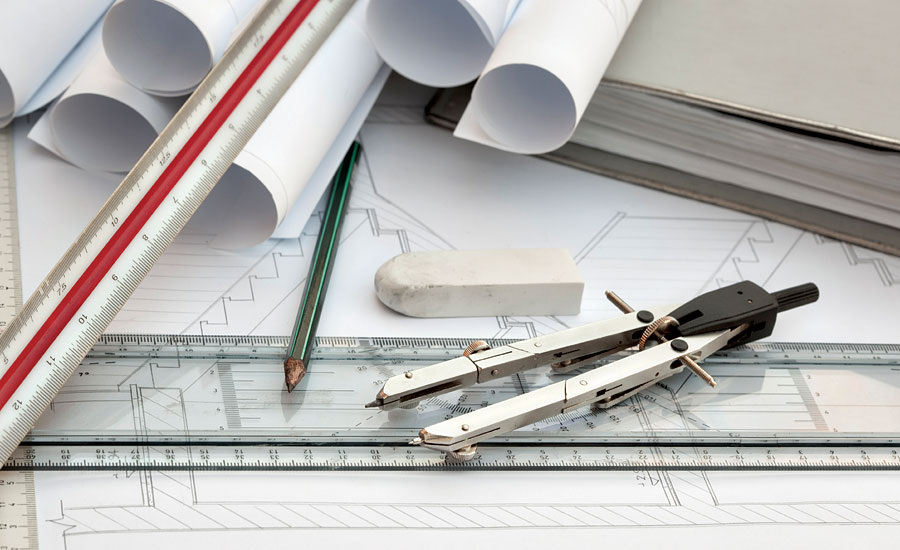A “standard” is the rule by which all are measured.
In the fire sprinkler industry, the motto for many years was “fixing potential problems on the drawing board is the most important part of the fire sprinkler design process.”
Many companies still hold true to this rule because costs and delays in the field can quickly cripple a budget and profits. There is no place for “Just get something on paper and get it out the door!” The reality is what you do not fix now, you must fix later or problems will plague the project.
Before the development of modern technologies, the time and effort that went into designing a fire protection system involved countless hours of hand-drawn plans. Those plans were interpreted and reworked into a calculated and efficient life safety plan. Designers of such plans exhaustively pursued education, hands-on experience and real-world applications.
At some point — likely beginning with the introduction of the computer-aided drawing systems that replaced the old drafting board — the fire protection design career was subdivided into sectional jobs tasked to multiple people. Thus, responsibility for a “coordinated fire protection design” was pushed onto the contractor and left as a field coordination issue. But is this right?
We rely on engineers to ensure toilets flush correctly and water fountains have adequate pressure. Engineers make sure the temperature of the board room and the guest rooms are perfect. Architects ensure the building layout is functional and works for its occupants. Don’t fire sprinkler and other life safety features demand the same level of professional resource and detail in their design?
Getting back to a higher ‘standard’
Today’s design world is a compilation of tight deadlines. Architect, owner and general contractor schedule demands and last-minute bidding have changed the pace and the course of the design process. But faster is not always better and something always suffers in the end.
The juggling game of “How much do I need to put into a drawing to make it reasonably acceptable?” has become as standard as the game “Candy Crush” in a doctor’s waiting room. But again, for life safety systems, is this acceptable?
Fire protection and life safety design have the potential to physically and materially impact people’s lives. With good design, a fire event is controlled and everyone goes home — sometimes not even knowing there was an incident. With bad design, the results can make headlines and be subject to scrutiny worldwide. When injuries or loss of life occurs as the result of poor design, it has repercussions with irreversible results.
The importance of a properly designed and installed fire protection and life safety system cannot be overstated. Sprinklers that conflict with décor, added mechanical piping, extra inspections and permits are all worth it, because it’s about people. Insurance companies are there to help property owners recover, but a life saved is always the end goal for a proper fire protection system.
In the last 20 years, technology has improved the process of fire system designs, but technology alone cannot correct bad design. Powerhouses such as 3D and building information modeling refine accuracy but are only as effective as the quality of the designer.
Due diligence
Fire projection system design makes an interesting case study. Consider the sprinkler system. Sprinklers are throughout the building, have visible components, can hold up final approval of a building and directly impact the survivability of the occupants in a fire. But when does the design process for this critical system typically occur? The answer should be … up front.
At the same time the team is reviewing a site for possible use, evaluation of the site from a fire protection due diligence perspective should be completed to ensure we know what it will take to properly protect the project as well as the protection’s impact on the project design.
Two of the most effective ways to reduce unnecessary costs in building projects are developing specific plans for fire protection and integrating approving authorities into the early development stages of a building’s design. Fire suppression and alarm systems, fire protection water supply, life safety features and — just as important — the requirements and impact of each should be identified, and considered during project conception. Only by moving this evaluation up front can all options ensured for protection be considered and then alternate solutions can be developed where necessary.
When an architectural or engineering firm designs fire and life safety systems, it has an obligation not only to the owner and the project schedule, but also to safeguard the life, health, property and welfare of the public. To ensure the designed system meets this strict expectation and gives the customer the best final product, the fire protection design process should be a partnership integrated into design and not relegated to the construction team.
A design firm that partners with its clients and integrates with the entire design team to create the best solution is not only going to complete the project on time but will give everyone the assurance a professional is looking out for the safety and protection of all involved. The comfort of knowing the investments made were required, what has been designed will perform as expected, and what is put into service will last with value and integrity starts with the design team.
This begins with due diligence, including researching codes, standards and local ordinances as well as developing an intimate understanding of what will occur within the building during its lifecycle. How will people use it? What infrastructure is necessary to support what is needed to protect life and contents? Asking these questions up front promotes system design that provides proper protection, serves the operational needs of the facility and provides flexibility where needed.
When the fire systems design begins, designers must be allotted time to do the right thing. Unfortunately, fire protection design is often relegated to the last phase of coordination after all the lights, diffusers, etc., have been placed to make the building aesthetically pleasing.
Then the next question is, “How quickly can you get it done?” While schedules are important, the team as a whole should coordinate to allow for proper design. There are ways to make this work without impacting the design schedule, but it requires the project design team to discuss and coordinate from the start. Consider the impact the fire and life safety systems can have on the occupants in an emergency and make sure that they have equal importance in the project schedule.
Good design begins not just with the designer but with a firm committed to providing the tools to improve the whole process, whether it is yet industry standard or not. Designers and firms must operate with respect for the process, ownership and accountability for the design and process, and a commitment to always doing the right thing. Finger-pointing at the CAD operator who did not properly lay out sprinkler heads, the designer who missed the details, the foreman who missed it on installation, or the inspector who missed it on the punch walk does nothing to fix the issue. The fire protection design firm must step up, own and correct any issues.
Such as others, the fire protection industry has endured growing pains with the advent of computer-aided design. When the systems became circles and lines on a screen, some seemed to forget the importance of what they were doing. The design became another box to check and relegated to the last place in line, despite its incredible importance. But fire protection design has not been taken down a path that cannot be reversed. We are in a position to make a real impact in the fire and life safety features that influence the lives of real people. But we have to take the first step.
For your next project, are you ensuring the fire and life safety systems are designed correctly? Have you included those considerations early enough in the design process? Does the schedule really have enough time to properly complete the design?
All tough questions, but answering them correctly can make the difference for those who inhabit the next building you design.
This article was originally titled “Where have our ‘standards’ gone?” in the May 2015 print edition of pme in the Fire Protection & Design Special Section.


